Predatory Lending: What It Is And How To Avoid It

Buying a house is an exciting experience, but it is also a complex process that involves many different parties working together to make it happen. One of the most important aspects of the home-buying process is obtaining a mortgage. Unfortunately, there are some lenders out there who engage in unethical and fraudulent practices, though not industry wide, which are considered predatory lending practices that can put home buyers at risk.
Predatory lending is a term used to describe a variety of unethical lending practices that target vulnerable borrowers. Unfortunately, because predatory lending takes many forms, there is no singular definition for it. In general, predatory lending involves practices that usually take advantage of the elderly, minorities, and inexperienced, uninformed consumers. These practices may include things like charging excessive fees and interest rates, hiding important information from borrowers, or steering borrowers into loans that they do not fully understand.
When Predatory Lending Involves Discrimination
The Fair Housing Act; Title 42, Chapter45, Section 3601 through 3631 of the United States Code states, it is unlawful for any person (or entity) whose business includes residential real estate-related transactions to discriminate against any person in the terms, conditions, or availability of a transaction because of the following:
- Race,
- Color,
- Religion,
- Sex,
- Handicap,
- Familial status, or
- National origin,
- Failing or refusing to provide to any person, in connection with a residential real estate-related transaction, information regarding the availability of leans or other financial assistance,
- Failing or refusing to provide application requirements, procedures or standards for the review and approval of loans or financial assistance, or
- Providing information which is inaccurate or different from that provided others. 24 CFR sec 100.120
- The last three provisions relate specifically to predatory lending. If a loan officer targets a certain portion of the population for a fraud scheme – perhaps because they are traditionally underserved by lending institutions or because they are not knowledgeable of the system, then they may be in violation of the Act.
- The Department of Housing and Urban Development (HUD) is the agency primarily assigned to implement and administer the Act.
Some basic examples of predatory lending are:
- Selling properties for much more than they are worth using false appraisals.
- Failure to Report Borrower Credit Information: Encouraging borrowers to lie about their income, expenses, or cash available for down payments to get a loan.
- Knowingly lending more money than a borrower can afford to repay.
- Steering: Charging high interest rates to borrowers based on their race or national origin and not on their credit history.
- Credit Insurance Packing: Charging fees for unnecessary or nonexistent products and services. Borrowers are led to believe they won’t receive a loan unless they agree to the added charges.
- Hidden Loan Terms: Pressuring borrowers to accept higher-risk loans such as balloon loans (huge balloon payment usually after 15 years), interest only payments (Borrower may be surprised that he owes almost as much as he originally borrowed 15 years earlier), and steep pre-payment penalties.
- Targeting vulnerable borrowers to cash-out refinance offers when they know borrowers need cash due to medical, unemployment or debt problems.
- Equity Stripping: “Strip” homeowners’ equity from their homes by convincing them to refinance again and again when there is no benefit to the borrower. (Flipping)
- Fraudulent “Home Improvement” Loans: Using high-pressure sales tactics to sell home improvements and then finance them at high interest rates. In some cases, the contractor does substandard work or abandons the project entirely.
- Reverse Redlining: Lender targeting minorities, elderly and susceptible, undereducated groups of borrowers to high-cost loans and not giving the borrower the true picture of the costs of borrowing.
- Contract knavery: Provisions in a loan contract that puts the borrower at a disadvantage-provisions that are not standard in the market and for which the lender has provided no balancing incentive.
- Price Gouging: Involves charging interest rates and/or fees that are excessive relative to what the same borrower would have paid had they shopped the market. Depending on the loan amount, most borrowers can, hypothetically expect to pay a one to three percent (1-3%) origination fee and possibly another one percent (1%) of the loan amount in points, as well as basic closing costs, which would include appraisal and attorney’s fees. Again, this is in no way intended to stipulate fees and charges the borrower will expect, buy just to give an idea of a possible range. Informed borrowers, even if they only check prices on the internet, are less likely to experience price gouging.
- Bill Consolidation Equity Loans: Consolidating short term debt into long term debt may lower monthly payments, however the interest paid over 15-30 years will be more than the 3-4 years of the short-term debt.
Key Terms in Lending
- Sub-Prime Loans: An industry term used to describe loans with less stringent lending and underwriting terms and conditions. Sub-Prime loans charge higher interest rates and fees due to higher risk.
- “B” loan or “B” Paper with FICO scores from 620-659
- “C” loan or “C” Paper with FICO scores from 580-619
- High interest Loans: A loan that is 8% above the yield on a comparable treasury on a first mortgage according to Home Ownership and Equity Protection Act of 1994 (HOEPA) guidelines, or a loan that is 10% above the yield on a comparable treasury on a second mortgage.
- Closing Costs: Fees for the final property transfer not included in the price of the property. A common estimate of a Buyer’s closing costs is 2 to 4 percent of the purchase price of the home. For Sellers 3 to 9 percent is a common estimate.
- Typical closing costs:
- Charges for the mortgage loan such as origination fees, discount points.
- Appraisal fee.
- Survey fee.
- Title search and insurance
- Legal fees.
- Real estate professional fees.
- Prepayment of taxes and insurance.
- Real estate transfer taxes.
- Hidden Fees: Fees put in the contract without being disclosed to the borrower.
- Balloon payments: A lump sum payment usually due at the end of a balloon mortgage.
- Refinancing (Loan Flipping): Paying off one loan by obtaining another, generally to secure better loan terms (lower interest rate). However, in the case of flipping a lender or broker might refinance multiple times with no tangible benefit to the borrower like rate reductions, payment reduction, term reduction, debt consolidation etc.
- Debt consolidation: Replacing several loans with one loan, usually with a lower monthly payment and a longer repayment period.
- Home equity loans: A loan backed by the value of a home (real estate). If the borrower defaults or does not pay the loan, the lender has some rights to the property. The borrower can usually claim a home equity loan as a tax deduction.
As a home buyer, it is important to be aware of predatory lending and to take steps to protect yourself from it. Here are some tips to help you avoid predatory lending:
- Do your research: Before applying for a mortgage, do your homework and research the different types of loans that are available to you. Look for lenders with a solid reputation and check their ratings with the Better Business Bureau.
- Read the fine print: Always read the fine print of any loan agreement carefully before signing it. Don't be afraid to ask questions if you don't understand something.
- Avoid loans with adjustable interest rates: Adjustable-rate mortgages (ARMs) may seem like a good deal at first, but they can be risky if interest rates rise.
- Don't be pressured into signing: Be wary of lenders who pressure you to sign a loan agreement without giving you time to consider it carefully.
- Seek advice from a professional: If you are unsure about a loan offer, seek advice from a financial advisor or a real estate attorney. You may also visit www.mikehomesweethomes.com and click on Lenders for professional advice and guidance.
Finding a house and turning it into a home is a dream for many people, but it is important to take the necessary steps to protect yourself from predatory lending. By doing your research, reading the fine print, avoiding risky loans, not being pressured, and seeking professional advice, you can ensure that you are making a sound financial decision.

Categories
Recent Posts










